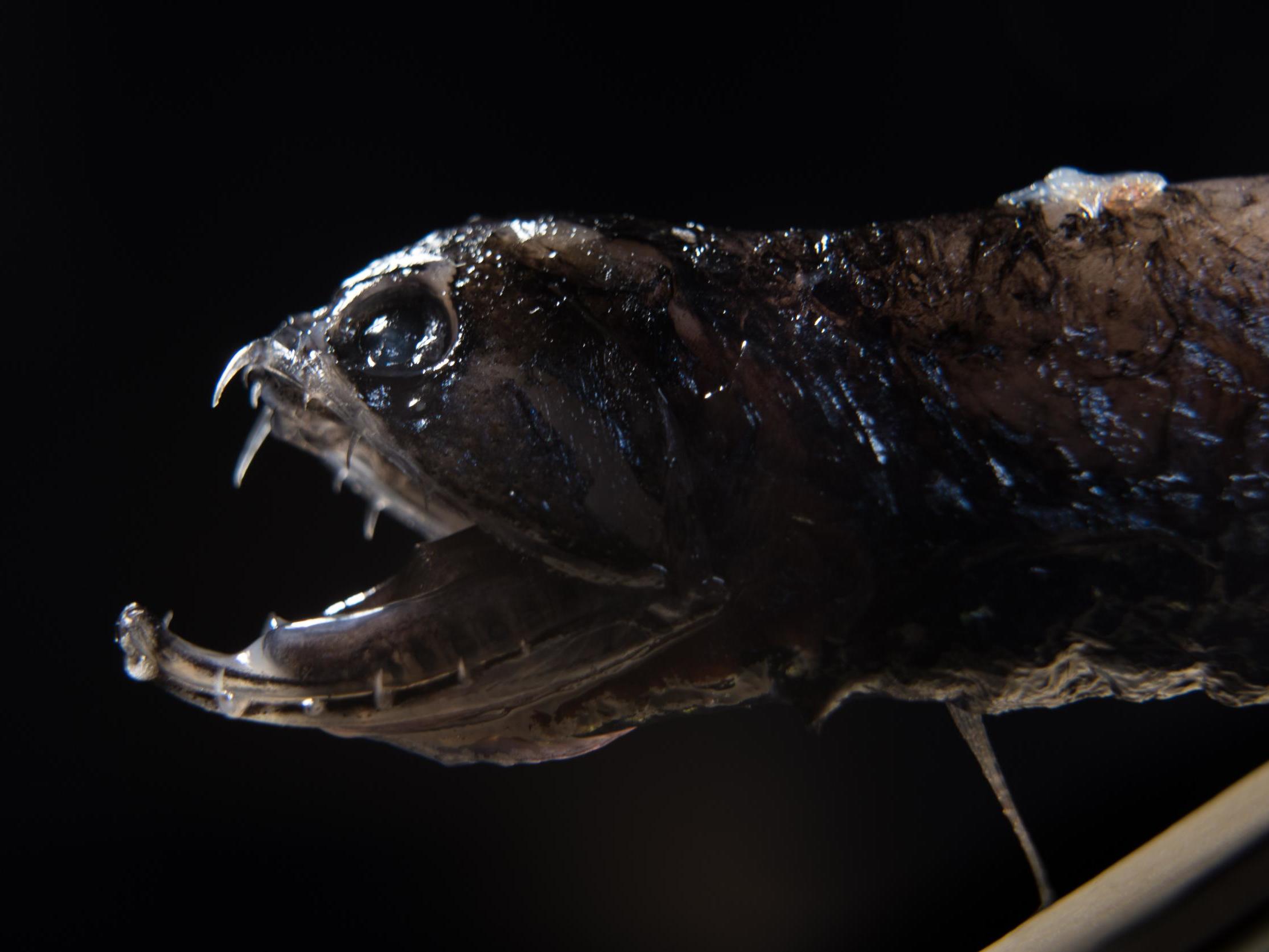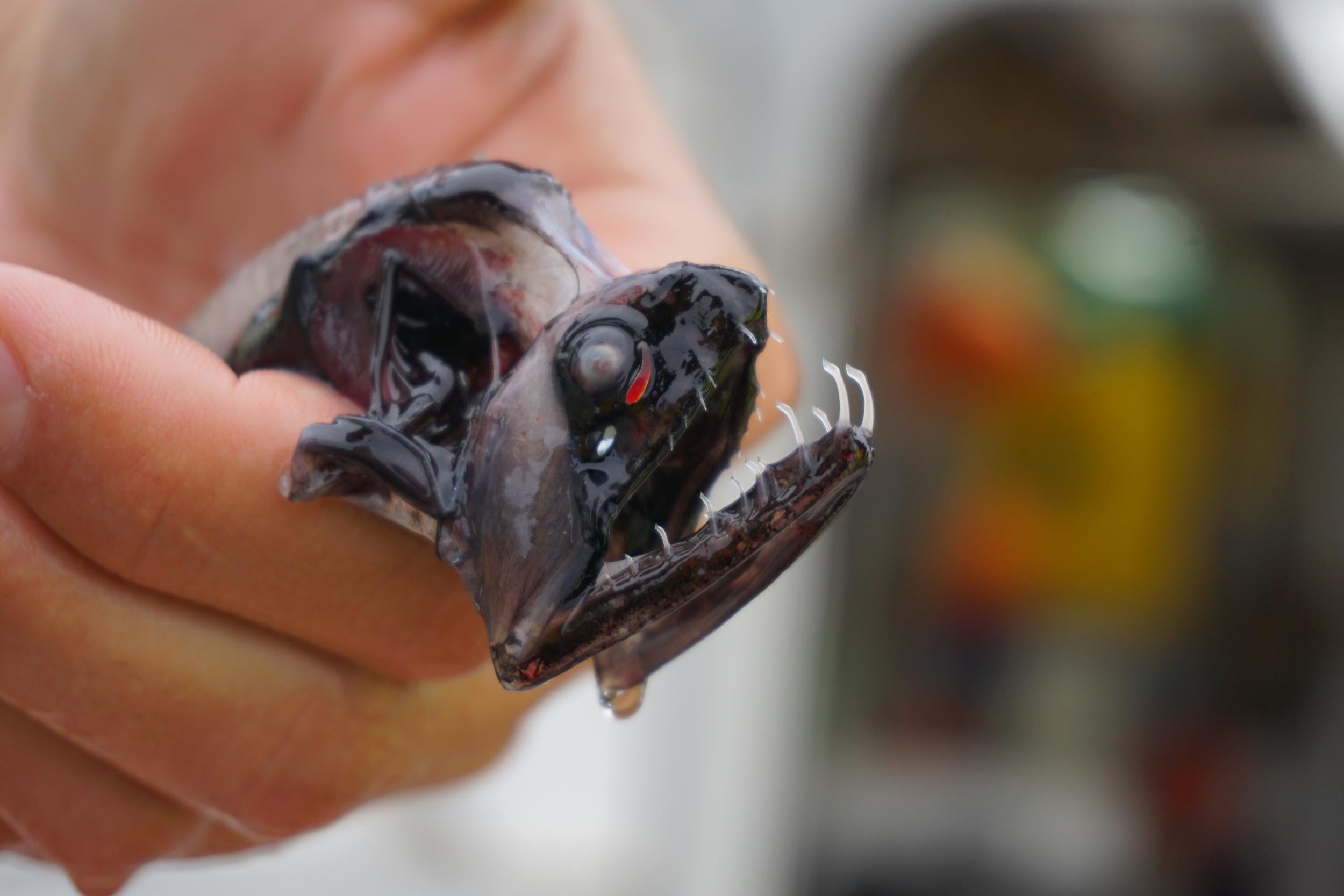Dragonfish: How deep-sea predator evolved nanocrystals that make its fearsome teeth invisible to prey
‘They spend most of their time sitting around with their jaws open, waiting for something to come by,’ says Audrey Velasco-Hogan

Your support helps us to tell the story
From reproductive rights to climate change to Big Tech, The Independent is on the ground when the story is developing. Whether it's investigating the financials of Elon Musk's pro-Trump PAC or producing our latest documentary, 'The A Word', which shines a light on the American women fighting for reproductive rights, we know how important it is to parse out the facts from the messaging.
At such a critical moment in US history, we need reporters on the ground. Your donation allows us to keep sending journalists to speak to both sides of the story.
The Independent is trusted by Americans across the entire political spectrum. And unlike many other quality news outlets, we choose not to lock Americans out of our reporting and analysis with paywalls. We believe quality journalism should be available to everyone, paid for by those who can afford it.
Your support makes all the difference.With a large black grin and dark eel-like body, the deep-sea dragonfish is one of the ocean's most formidable predators.
Part of this pencil-sized marauder's success is down to its fearsome set of fang-like teeth, which are covered in nanocrystals. This prevents light being reflected off them, meaning they are invisible to potential prey, according to the latest research.
“They spend most of their time sitting around with their jaws open, waiting for something to come by,” said lead researcher Audrey Velasco-Hogan, a PhD student at the University of California San Diego.
“Their teeth are always exposed, so it’s important that they are transparent so they don’t reflect or scatter any bioluminescent light from the environment.”
Despite measuring just 15 centimetres in length, deep-sea dragonfish (Aristostomias scintillans) are apex predators and feed on fish that are up to half their size. They are so voracious that they even eat each other.

If their teeth were visible, prey would immediately shy away, researchers say.
Scientists analysed the nanostructure of the teeth by using electron microscopy, which is a technique used to obtain high-resolution images of biological specimens. They discovered that like humans, dragonfish have an outer enamel-like layer and an inner dentin later.
The outer layer was covered in grain-sized nanocrystals arranged to prevent light being scattered or reflected off the surface of the teeth, according to the paper published in the journal Matter.
The inner layer is also structured in a different way, and does not have microscopic channels called dentin tubes which normally give teeth their ivory colour. The fact their teeth are very thin adds to the light-scattering effect.
“From a materials perspective, it’s really interesting to see that dragonfish teeth have architectures that we do not see in others. By studying why these teeth are transparent, we can better understand deep-sea organisms like the dragonfish and the adaptations they evolved to live in their environments,” Ms Velasco-Hogan said.
The findings could provide inspiration for researchers looking to develop transparent ceramics.
“Taking advantage of the ultimate adaptation organisms show to specific environments has always been a driver for technological innovation, and the dragonfish is no exception to this,” said Dimitri Deheyn, a marine biologist at the Scripps Institution of Oceanography at UC San Diego.
“There is clearly still broad inspiration to gather from the dragonfish and nature in general, and this intercept between biology and engineering through biomimicry is clearly a lucrative path for sustainable innovations.”
Join our commenting forum
Join thought-provoking conversations, follow other Independent readers and see their replies
Comments